In the silent corners of our world, master architects work tirelessly, crafting structural marvels with nothing but the silk they produce from their own bodies. Spiders, often feared or overlooked, are nature’s premier textile artists and structural engineers. Their web designs range from the familiar orb webs that glisten with morning dew to bizarre three-dimensional structures that challenge our understanding of animal architecture. These eight-legged architects create geometric precision without measuring tools, construct suspension bridges without mathematical calculations, and deploy hunting strategies more sophisticated than many human-designed systems. Let’s explore the fascinating world of spider web architecture—where function meets beauty in designs that have been perfected over 400 million years of evolution.
The Evolutionary Marvel of Spider Silk

Spider silk stands as one of nature’s most remarkable materials, combining extraordinary tensile strength with astonishing elasticity. Pound for pound, this biological fiber outperforms steel in tensile strength while maintaining flexibility that synthetic materials can only dream of achieving. Spiders can produce up to seven different types of silk from specialized glands, each with unique properties tailored for specific functions—from the strong draglines that form the web’s framework to the sticky capture spirals designed to ensnare prey. The molecular structure of spider silk consists of crystalline regions that provide strength alternating with amorphous sections that offer elasticity, creating a natural composite material that scientists worldwide are still struggling to replicate. This evolutionary achievement represents millions of years of refinement, resulting in a material so perfect for its purpose that it remains unmatched by human engineering despite our most advanced technologies.
Orb Weavers: The Classic Geometric Artists
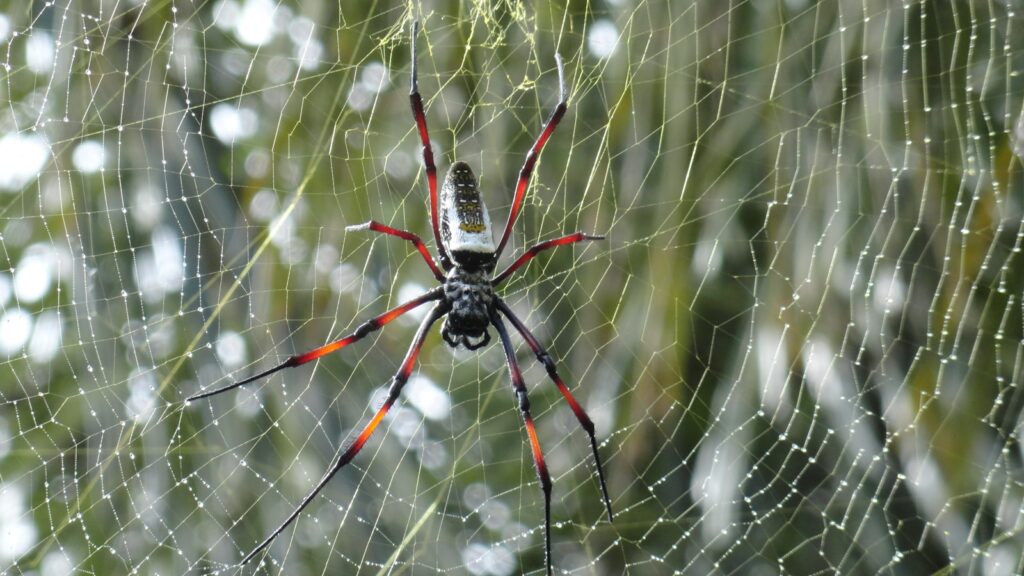
Orb-weaving spiders create the archetypal spider webs that most people envision—circular masterpieces of concentric rings connected by radial threads. These symmetrical constructions begin with a bridge line that the spider casts across open space, often floating on air currents until it catches on a distant anchor point. Once this foundation is established, the spider meticulously builds a framework of non-sticky radial threads emanating from a central hub, followed by a spiral of capture silk coated with glue droplets to ensnare prey. What appears simple at first glance reveals remarkable complexity on closer inspection—the tension of each strand is precisely calibrated, and the spacing between spiral threads is optimized for catching specific prey sizes typical to the spider’s habitat. The entire construction process typically takes less than an hour, yet creates a structure engineered to withstand both struggling prey and environmental stresses like wind and rain.
The Geometric Precision of Web Construction
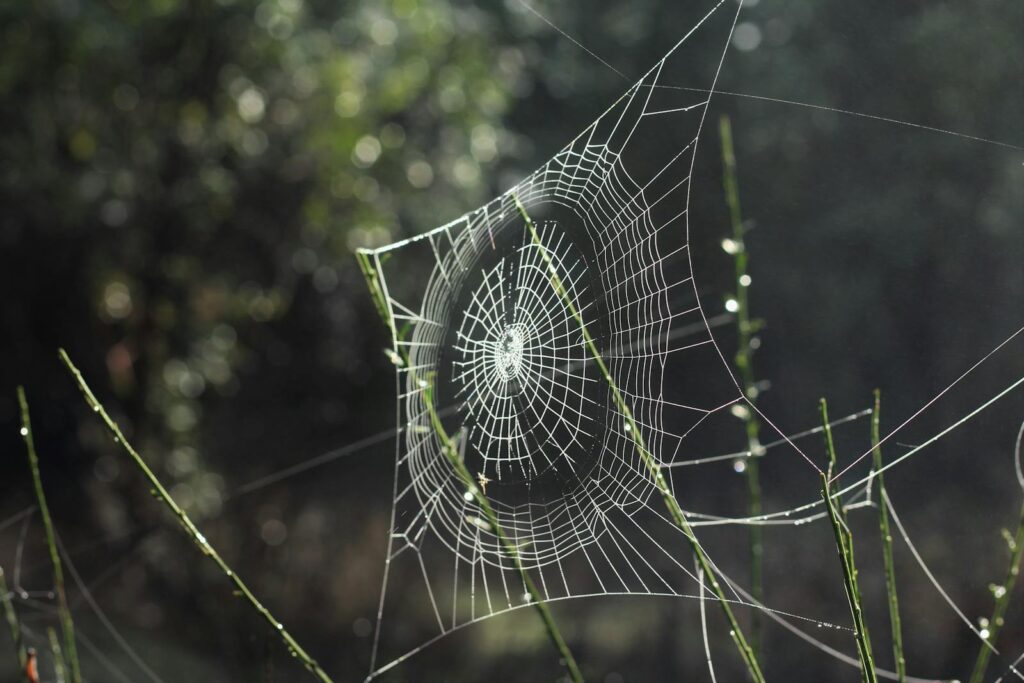
Without rulers, protractors, or any measuring tools, spiders achieve astonishing geometric precision in their web designs. Research has shown that spiders use their own body parts as measuring devices, with leg spans determining thread spacing and body rotations establishing angles between radial supports. This innate sense of measurement allows species like the garden spider (Argiope) to create webs with nearly perfect symmetry and consistent spacing. Even more remarkably, spiders adjust their designs to accommodate spatial constraints and environmental conditions, narrowing or widening sections to fit available anchor points while maintaining the web’s overall structural integrity. The precision extends to microscopic levels, with some species controlling the size and distribution of sticky droplets along capture threads to maximize both adhesion efficiency and material conservation. This combination of innate geometric understanding and adaptive construction represents a level of engineering sophistication that challenges our notions of what’s possible without conscious calculation.
Sheet Web Architects: Masters of Horizontal Platforms
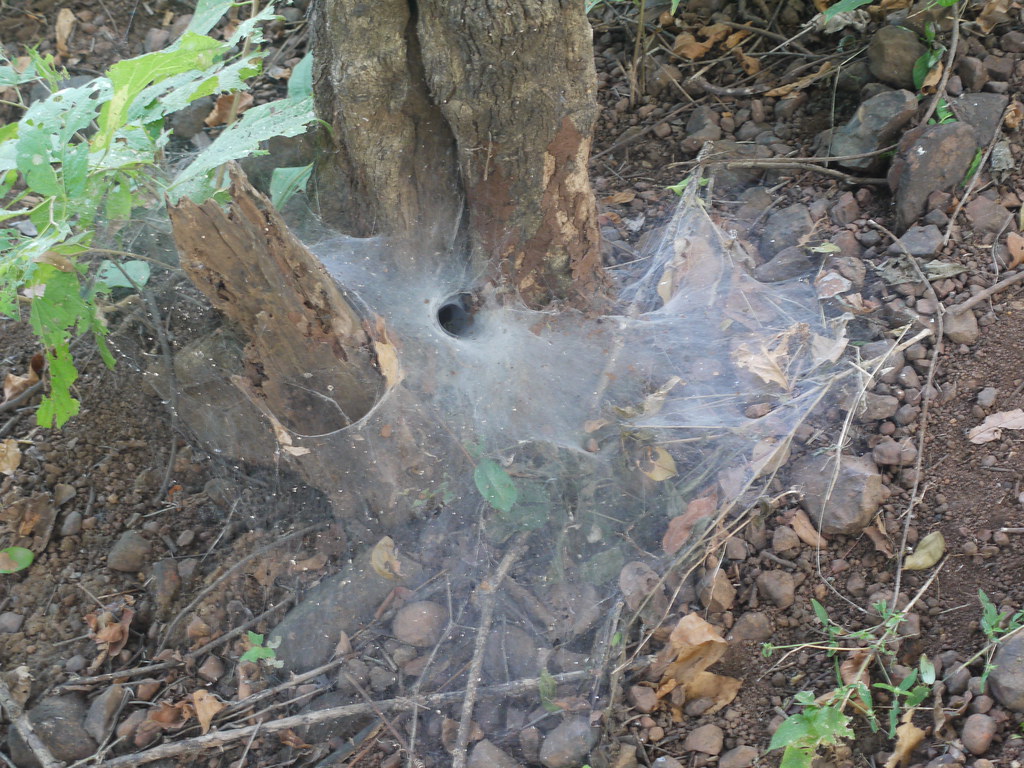
Unlike their orb-weaving cousins, sheet web spiders construct horizontal platforms of densely woven silk that resemble delicate hammocks or sheets suspended in vegetation or ground depressions. Species in the Linyphiidae family, among the most numerous spider families globally, specialize in these sheet constructions, often complementing them with a maze of non-sticky threads above the sheet that disorient flying insects and cause them to tumble onto the platform below. The sheet itself, despite its apparent simplicity, features remarkable structural engineering with multiple layers of silk creating a resilient surface strong enough to support both the spider and its struggling prey. These architectural marvels represent a fundamentally different approach to prey capture compared to vertical orb webs, trading the interceptive strategy of vertical designs for a more passive “knockdown” approach that requires less active hunting but more strategic placement. Sheet webs often incorporate ingenious drainage systems that prevent water accumulation during rain, demonstrating how these architects have solved complex environmental challenges without conscious planning.
The Three-Dimensional Marvels of Cobweb Spiders
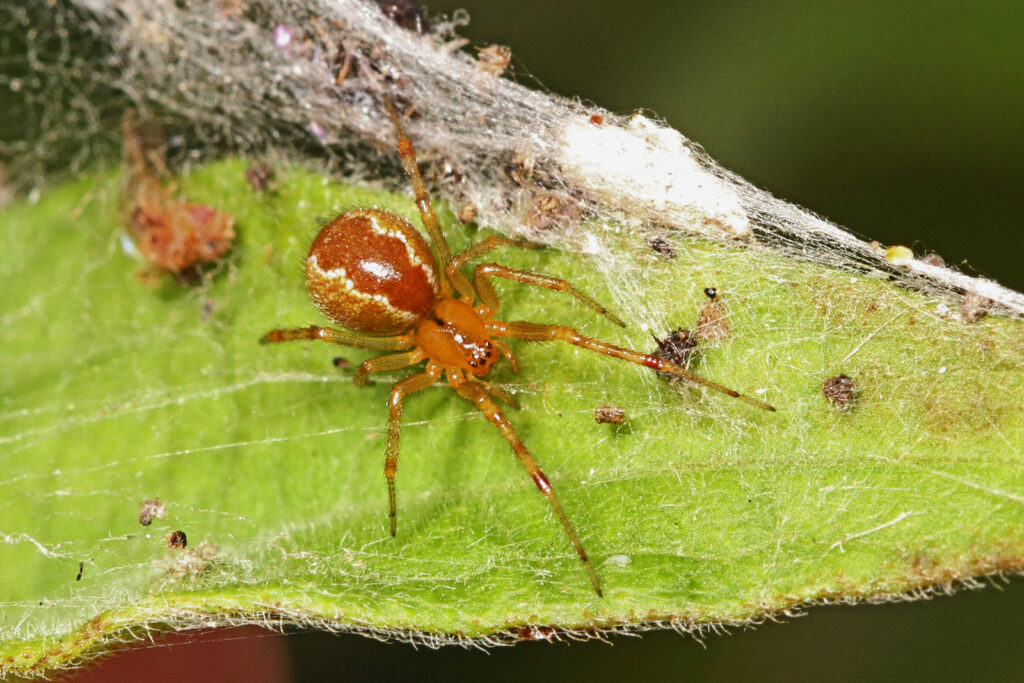
Cobweb spiders, belonging primarily to the Theridiidae family, construct some of the most chaotic-appearing yet functionally sophisticated web designs in the spider world. Unlike the orderly geometry of orb webs, these three-dimensional structures seem haphazard at first glance but reveal complex spatial organization upon closer examination. The tangled network extends in all directions from central attachment points, creating a three-dimensional maze of sticky and non-sticky threads that effectively capture prey approaching from any angle. Black widow spiders exemplify this architectural style, building webs with stronger structural threads at the top and sticky, capture threads hanging down like deadly fishing lines to snare ground-moving insects. The apparent disorder of these webs belies their sophisticated design—the seemingly random arrangement maximizes capture area while minimizing material use, and the varied tension patterns create vibration signatures that help the spider precisely locate ensnared prey even in complete darkness. These architectural innovations demonstrate how evolutionary pressures have produced designs that transcend simple geometric patterns to create functional hunting systems optimized for specific ecological niches.
Net-Casting Spiders: The Hunters with Handheld Webs
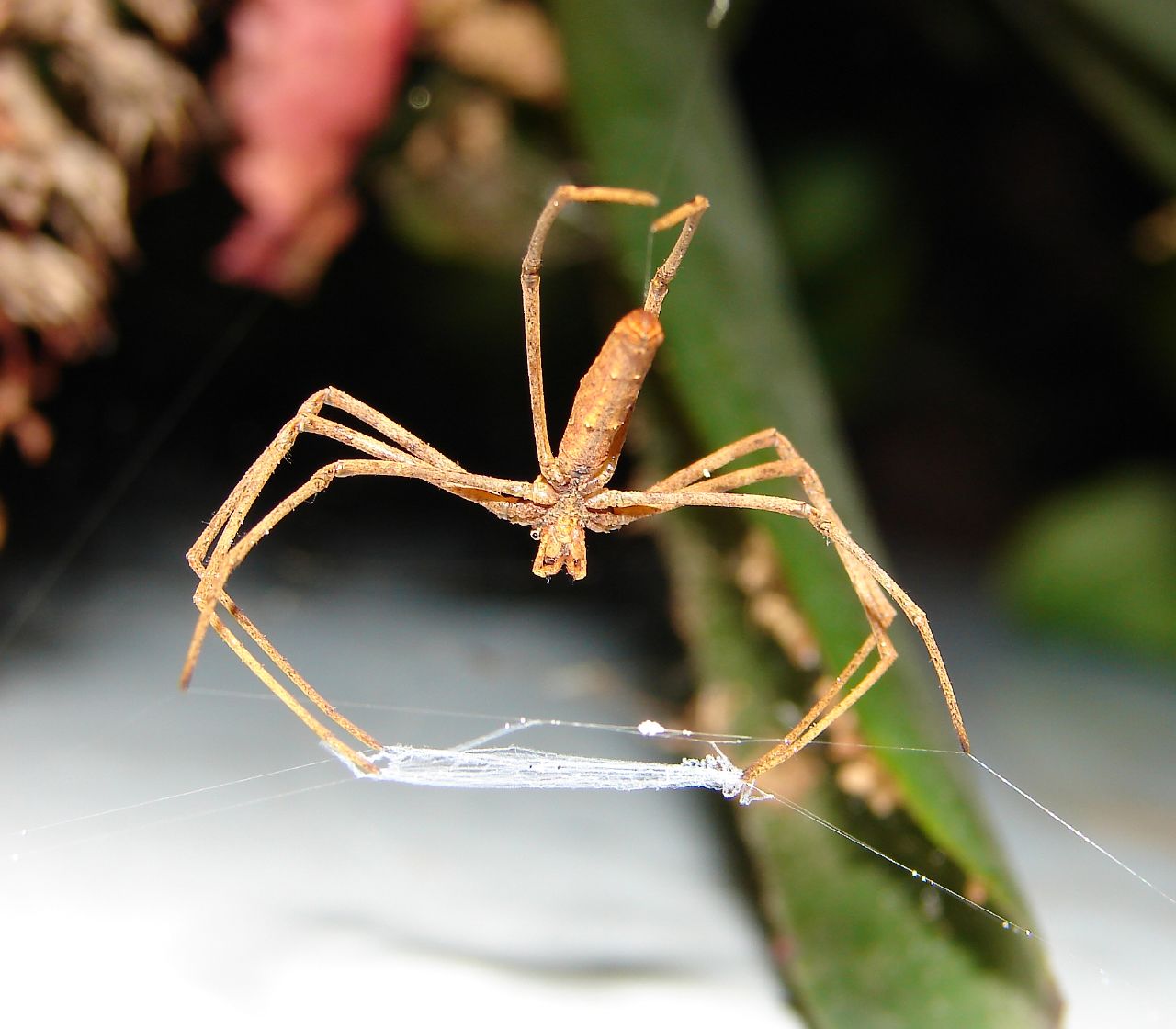
Perhaps the most extraordinary departure from conventional web architecture comes from the net-casting spiders (Deinopidae), which have abandoned stationary webs entirely in favor of a mobile hunting strategy using silk as a capture tool rather than a stationary trap. These remarkable hunters, sometimes called ogre-faced spiders due to their large forward-facing eyes, construct small rectangular nets held between their front legs while hanging upside down from a silk thread. When prey approaches, the spider stretches the net to two or three times its relaxed size and quickly throws it over the victim in a movement faster than the human eye can follow. The construction of these nets involves specialized cribellate silk with unique adhesive properties produced by a plate-like spinning organ called the cribellum, resulting in a capture tool both expandable and adhesive without requiring sticky glue. This revolutionary adaptation of web architecture from stationary structure to handheld tool represents one of the most innovative evolutionary developments in predatory strategies among arthropods, blurring the line between web building and tool use.
The Invisible Engineers: Threads That Manipulate Light
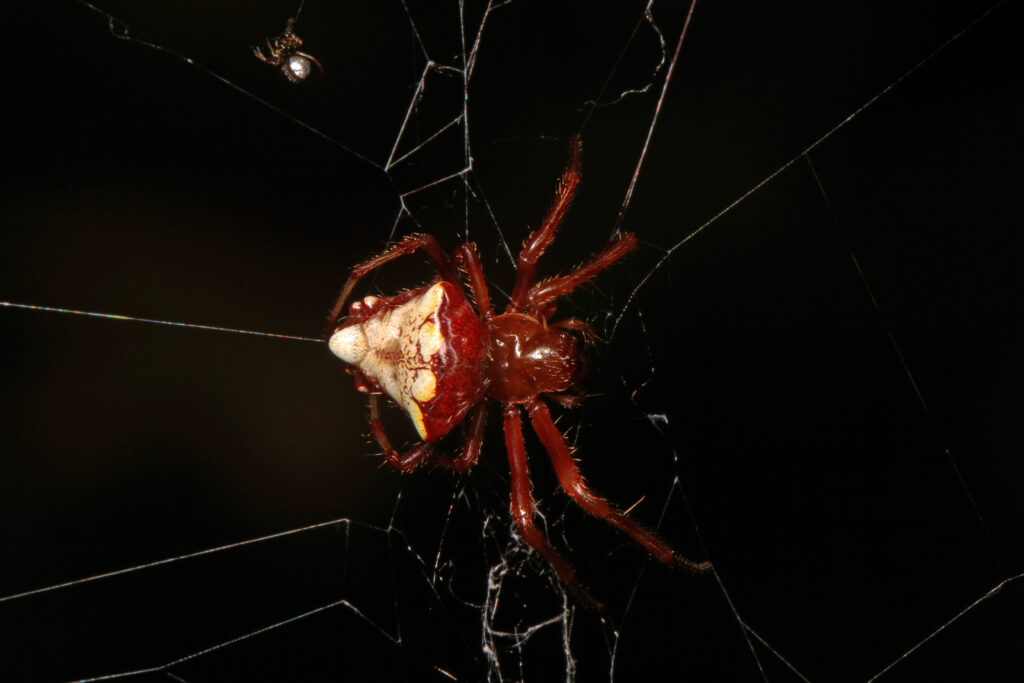
Beyond their structural properties, some spider webs incorporate sophisticated optical engineering that manipulates light to attract prey or achieve near invisibility. Certain orb-weaving spiders decorate their webs with ultraviolet-reflective silk structures called stabilimenta, which researchers believe may attract insects that navigate using UV light patterns. Conversely, other species have evolved silk that minimizes light reflection across most of the visible spectrum, creating nearly invisible traps that prey cannot detect until it’s too late. The cribellate silk produced by some spider families includes fibers as thin as 10 nanometers—approaching the scale where quantum effects influence light interaction—resulting in threads that absorb rather than reflect most wavelengths of light. Even more remarkably, some tropical spider silks incorporate fluorescent proteins that convert harmful ultraviolet radiation into visible blue light, potentially serving both as an attraction mechanism for insects and as a UV protection system for the web itself. These sophisticated optical properties demonstrate how spider web architecture extends beyond mere structural design into the realm of light engineering—an achievement all the more remarkable for having evolved without conscious design.
Web Decorators: The Artistic Embellishers
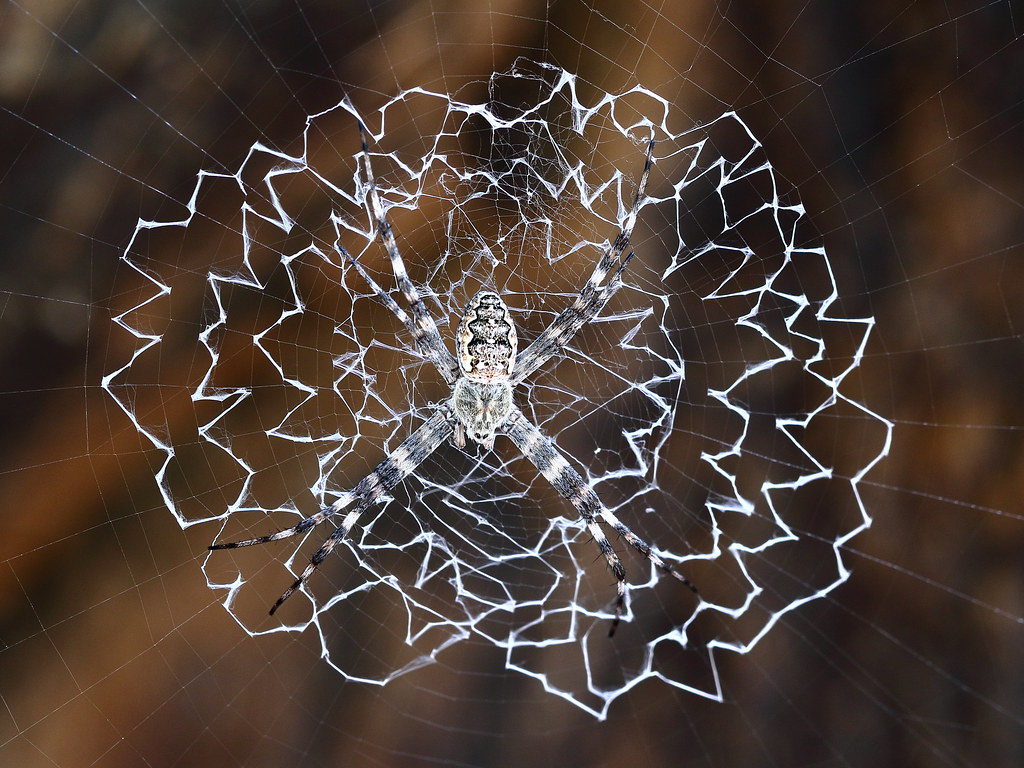
Some spider architects go beyond functional construction to incorporate elaborate decorative elements into their webs, creating structures that seem to transcend pure utility into the realm of artistic expression. The most famous web decorators are the garden spiders of the genus Argiope, which create zigzagging bands of densely woven silk called stabilimenta across their orb webs, forming distinctive X or spiral patterns visible from a distance. These decorations have puzzled scientists for decades, with theories suggesting they might serve to warn birds against flying through the web, camouflage the spider from predators, attract prey with ultraviolet reflectivity, or regulate temperature through light reflection. Tropical species like Gasteracantha produce even more elaborate decorations, incorporating colored silk, prey remains, egg sacs, and even collected environmental materials like flower petals into artistic arrangements around the web periphery. While the adaptive benefits of these embellishments remain debated among arachnologists, their complexity and apparent aesthetic arrangement raise fascinating questions about the line between functional adaptation and structures that appear to transcend pure utility—leading some researchers to cautiously suggest these may represent primitive aesthetic behaviors in invertebrates.
Underwater Architects: Spiders That Defy Their Terrestrial Origins
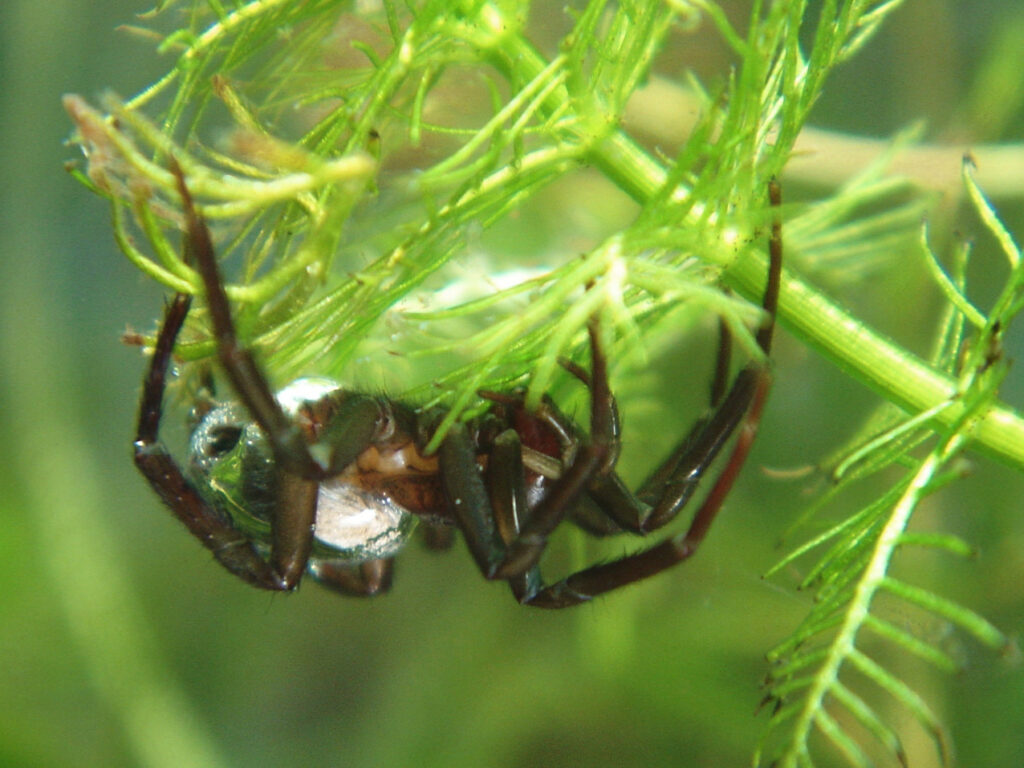
In perhaps the most extraordinary adaptation of spider web architecture, the European water spider (Argyroneta aquatica) has taken the art of web building into an environment that should be impossible for air-breathing arachnids—underwater. This remarkable species constructs a silk dome beneath the water’s surface, then fills it with air carried down from the surface in a bubble clinging to specialized hairs on its abdomen, creating what amounts to an invertebrate diving bell. The silk structure functions not merely as a physical shelter but as a sophisticated gas exchange system, with the thin silk membrane allowing oxygen to diffuse from the surrounding water into the air bubble while carbon dioxide passes in the opposite direction. Through this ingenious adaptation, the water spider creates a permanent underwater home that provides both physical protection and respiratory support, allowing it to live its entire life submerged while still breathing air. This revolutionary adaptation of web architecture demonstrates the extraordinary versatility of spider silk as a construction material and highlights how evolutionary pressures can drive innovations that completely transform the fundamental purpose of architectural designs from simple prey capture to complex life-support systems.
The Engineering Genius of Suspension Web Bridges
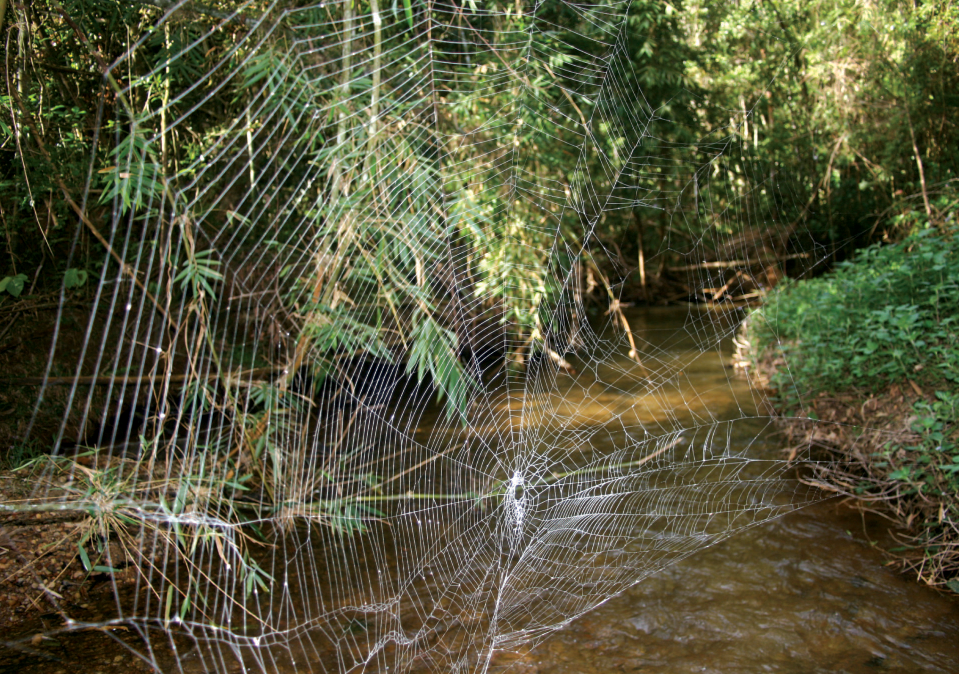
Some of the most spectacular achievements in spider architecture occur on a grand scale when certain species construct what amount to suspension bridges across substantial gaps. Darwin’s bark spider (Caerostris darwini), discovered in Madagascar in 2009, produces the largest orb webs ever recorded, with bridge lines spanning up to 25 meters across rivers and lakes—a distance that would be equivalent to a human building a structure several kilometers long using only body-produced materials. The anchor threads for these massive constructions exhibit unprecedented strength, up to ten times tougher than Kevlar by volume, allowing them to support not just the web but also to withstand the forces generated by winds across open water. The spider begins these massive projects by releasing dragline silk into the air, allowing it to be carried by the breeze across open water until it catches on vegetation on the opposite shore—a process requiring precise assessment of wind direction and strength. Once this initial bridge line is established, the spider reinforces it with multiple threads, creating a suspension cable from which the entire web will hang—demonstrating principles of structural engineering that humans only discovered formally in the 19th century but which these tiny architects have employed for millions of years.
The Mathematical Wonders of Spider Web Geometry

The geometric sophistication of spider webs has attracted the attention of mathematicians who have discovered that many web designs incorporate advanced mathematical principles the spiders “solve” through evolutionary optimization and instinctive behavior. Orb webs, in particular, demonstrate principles of the logarithmic spiral—a mathematical curve where the distance from the center increases exponentially as the spiral progresses, creating a pattern that maintains consistent angular relationships throughout the structure. This geometric property allows the web to distribute force efficiently throughout its structure while maximizing capture area relative to the amount of silk used. Further mathematical analysis has revealed that the tension distribution in properly constructed webs creates a system where vibrations from prey strikes propagate efficiently to the spider while minimizing structural damage, essentially forming a finely-tuned mechanical information network. Some species even adjust thread tension and spacing based on prey availability and environmental conditions, effectively recalculating the optimal mathematical solution to match changing circumstances. These discoveries have inspired human engineers to apply “spider algorithms” to problems ranging from structural design to computer network optimization, demonstrating how natural selection has produced solutions to complex mathematical problems without the need for conscious calculation.
Biomimicry: Learning from Nature’s Master Builders

The extraordinary architectural achievements of spiders have increasingly captured the attention of human engineers seeking sustainable solutions to complex design challenges. Spider silk’s combination of strength, elasticity, and minimal material use has inspired everything from bulletproof fabrics to medical sutures, with researchers worldwide working to replicate its properties through genetic engineering and synthetic chemistry. Beyond the material itself, the structural principles of web design have influenced architectural innovations, including tension-based building systems that distribute forces efficiently while minimizing material requirements. The Japanese designer Eiji Nakatsu famously studied spider web impact absorption when designing the nose cone of the Shinkansen bullet train, creating a structure that efficiently manages air pressure waves while traveling through tunnels. Perhaps most remarkably, computer scientists have developed algorithms based on how spiders adjust their webs in response to damage or environmental changes, creating self-healing network systems that automatically reroute information flows around damaged sections—mimicking how a spider repairs and reconfigures its web after part has been destroyed. These examples of biomimicry demonstrate how the architectural genius of spiders, refined over evolutionary time, continues to provide inspiration for human innovation across disciplines ranging from materials science to information technology.
Conclusion

From the elegant symmetry of orb webs to the underwater diving bells of water spiders, the architectural achievements of these tiny engineers continue to amaze and inspire. Their webs represent not just hunting tools but the culmination of evolutionary design processes that have solved complex structural, mechanical, and even optical challenges with elegant efficiency. As we continue to study and understand these remarkable structures, we gain not only appreciation for these often-misunderstood creatures but also valuable insights that inform our own architectural and engineering pursuits. In a world increasingly focused on sustainable design and material efficiency, the humble spider—nature’s premier architect—may have been showing us the way forward all along.

